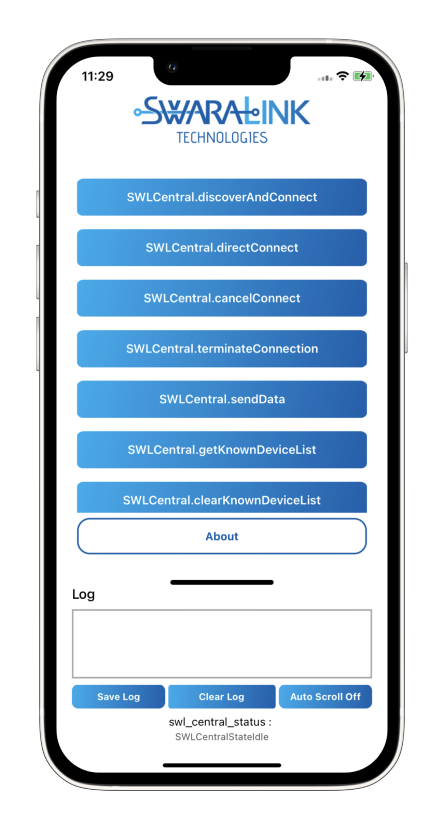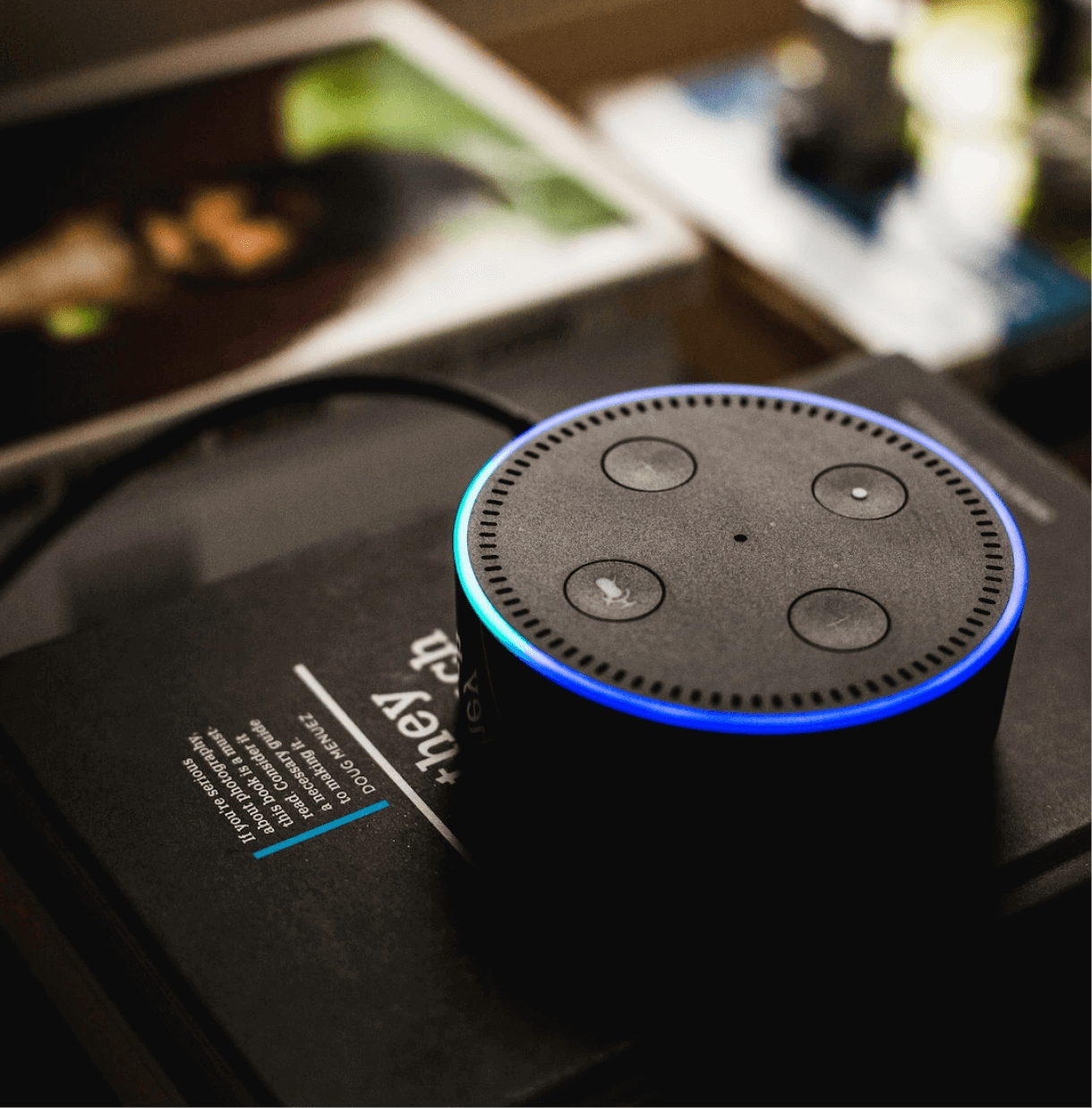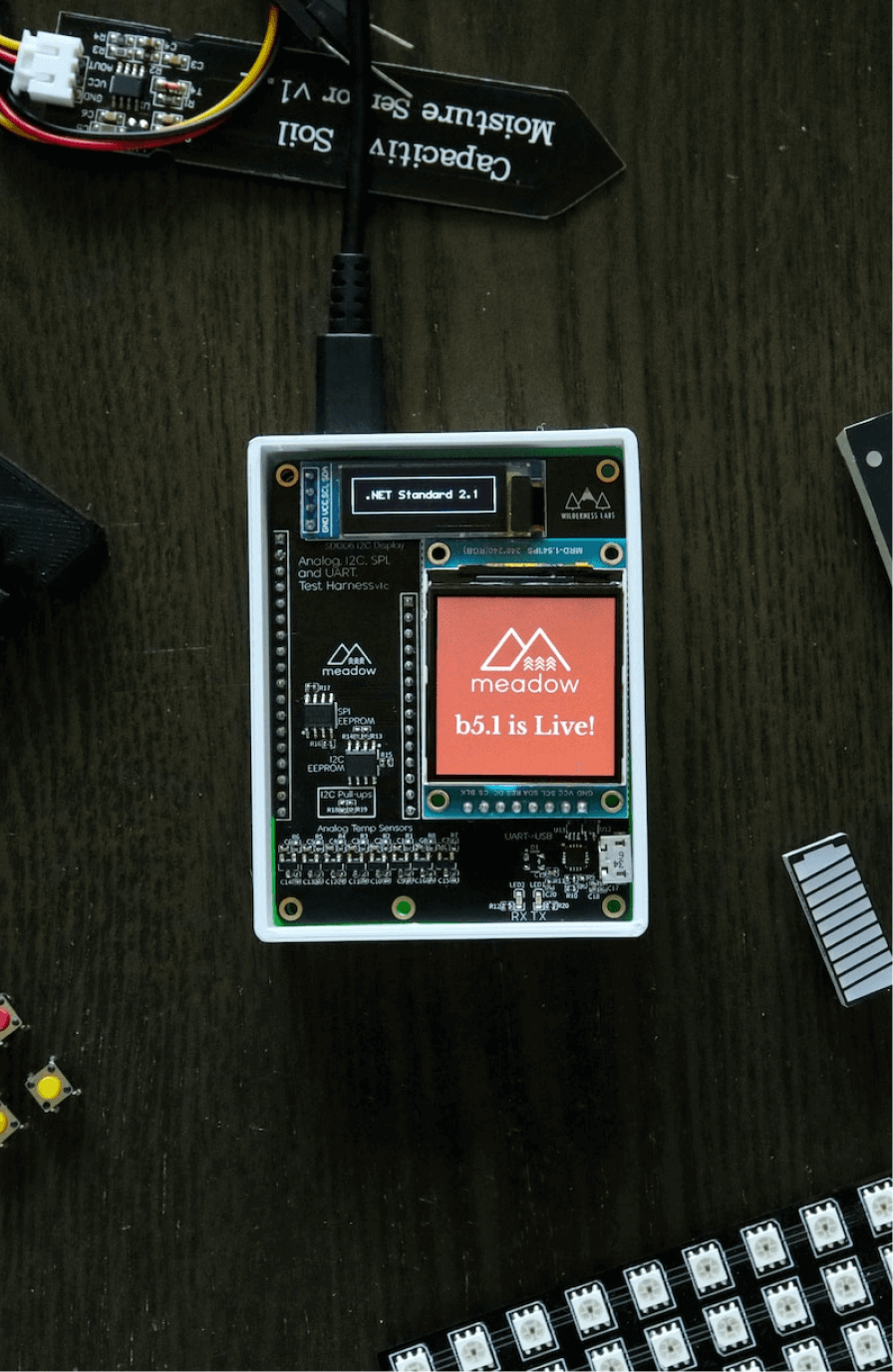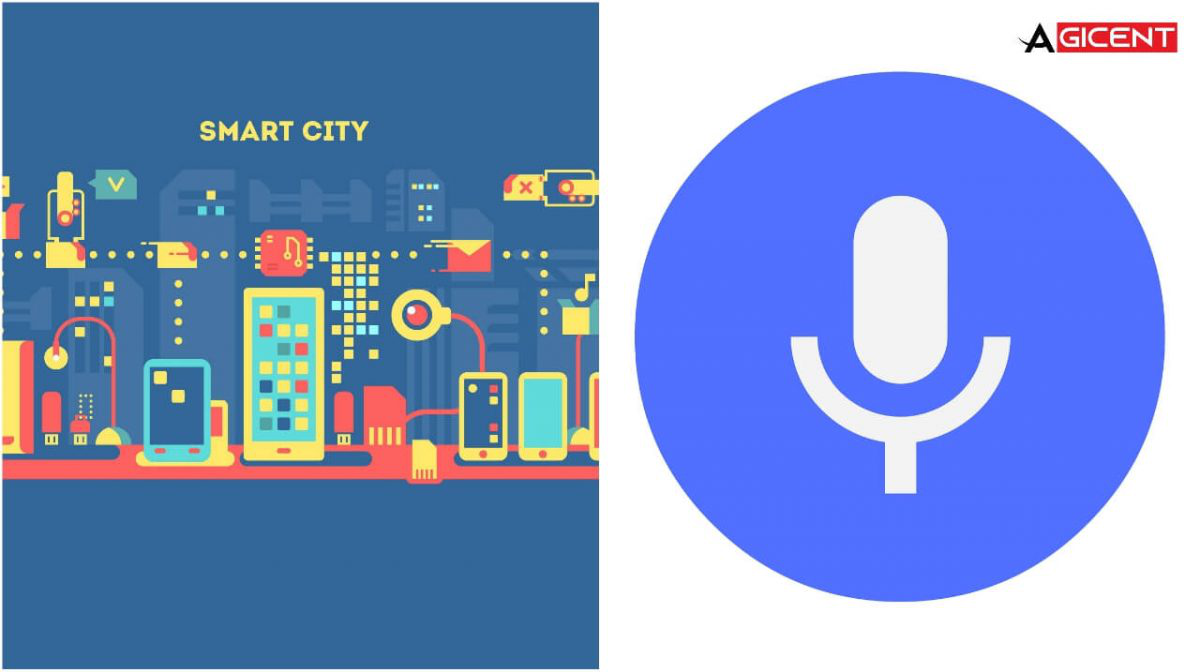IoT App Development Company
Our finest IoT App Development experts can help you creating a variety of modern and high performing IoT Apps. We are working on Apps connected with middleware using BLE chipsets including Nordic nRF52, Silicon Labs EFR32BGx2, infinion etc blended with Native (Swift, Kotlin), Cross platform (react native, flutter) technologies. We have created IoT apps/ BLE Apps across all popular wearable devices like Watches, eyewear, ankle bands, medical meters.
We've a shining example of Monocle Eyewear which is empowered by Swaralink BLE Platform for which Mobile Apps and SDKs are created by Agicent IoT Application Development Company. Monocle is a pocket-sized, open source AR (Augmented Reality) device that supports video instant replay, super zoom, and photo capture at your fingertips.
Recognised by the best

Verified Profile on Inc.

Covered by Huffpost

Top mobile app development company

Top mobile app developers in India

Visit our profile at AppFutura

Press Released Covered by Daily Mail

Best App Development Companies for Startups 2021

Our Interview with eFM

Reviewed 5 Stars on Venturepact

Top Mobile App Development Company
Trusted by





We are genuinely specialized in IoT Application Development Services since a decade. So much so that we are dedicating half of our team to only IoT Development. Here’s our story with IoT App Development that started 12 years ago:
We created our first IoT App back in 2013 and the project is a famous tool in the world of supply chain known as “Smart Gladiator Scan Guns system” . It was a project where “Ring scanners wearable” was to be connected with an industrial cased “iPod” to exchange scanning information in real time without the user (in a warehouse setting) to manually update it while all information was gone to the secure inventory management server on Unix, Linux and plenty of more environments. A fairly complex project that was for those times, we did it successfully and Smart Gladiator is a very successful and renowned business now.
Fast forward 2021 , we partnered with Swaralink Technologies to create Mobile Apps and SDks (for other developers to use) for the Swaralink Cross Platform Middleware, that simplifies and reduces the cost of developing high-quality IoT products that use Bluetooth Low Energy technology. We created the App for all technologies – iOS Native using swift, Android native using Kotlin, React native, and flutter for cross platform integrations and still update them time to time.
Technologies made by us are empowering big innovation in the IoT and BLE wearable world, Moncole Open source eyewear is powered by Swaralink platform and many other BLE and IoT startups are utilizing it.
Discuss your IoT/ BLE App Project with us!An incredible story of Agicent IoT Application Development Company in collaboration with Swaralink for their IoT BLE App development that is empowering open source eyewear like Monocle and other smart devices. And also past success story of our collaboration with Smart Gladiator IoT wearable for Supply Chain.

SwaraLink is the ideal solution for demonstrating, developing, and testing the advanced capabilities of the SwaraLink Bluetooth Low Energy (BLE) Platform. This cross-platform middleware simplifies the development process and reduces costs, making it the perfect choice for creating high-quality products utilizing Bluetooth Low Energy technology.
Comprised of two middleware components - the peripheral library, "swl_periph," and the central library, "SWLCentral" - the SwaraLink BLE Platform offers a seamless user experience while ensuring interoperability with iOS and other mobile operating systems. Its power-optimized design maximizes battery life, while its high-throughput capabilities offer over 600 kbps application data transfer with an iPhone.
Effortless pairing and unpairing procedures, along with built-in security features like encryption with secure key exchange and access control, ensure your device is secure and protected. Additionally, the platform offers over-the-air firmware updates and built-in exception handling for remote debugging.
The SwaraLink app provides full access to the SWLCentral mobile API, allowing users to take advantage of all the platform's features and functions. Every function call and event generated by the library is displayed in a timestamped log, making it easy to track progress and identify any issues.
Whether you're an embedded developer or simply looking to test and validate your device, the SwaraLink app is the perfect tool to help you achieve your goals.
- Designed for a fast and seamless user-experience
- Tested and optimized for interoperability with iOS and other mobile operating systems
- Power-optimized to maximize battery life
- High-throughput: >600 kbps application data throughput with an iPhone
- Simplified pairing and unpairing procedures
- Default security features: Encryption with secure key exchange, Access control (connection rejection of unpaired devices)
- Over-the-air firmware updates
- Built-in exception handling and diagnostics for remote debugging
Rates for IoT App Developers on Demand
Following is the standard rate card for different Exp and skill levels of On Demand IoT App Developers. Besides this, we can also create a custom on Demand App Team and optimized the monthly rates based on your specific needs or provide Fixed Price IoT App Development Services.
Mid-level IoT Developer
Exp. Level: 2-5 Years
- 3 IoT Projects exp minimum
- Has Backend Exp
- Hands on CI/CD pipeline
- Manages Jr. Devs
- Perfect for complex IoT projects and fast Development
Senior IoT Developer
Exp. Level: 5+ Years
All of Mid-level Exp +
- 3+ End to end IoT Projects
- Middleware Experience
- Participate in Architecture
- Can play Tech. Lead Role
- Perfect for bigger size projects with multi teams
#ClientSpeaks
Learn more about our processes from our clients.
Sandeep Kamath
CEO, Swaralink Inc.

Agicent's flexibility and accommodating approach have made them a valuable partner in our IoT projects. Their technical expertise and commitment to delivering on time have consistently exceeded our expectations.
Sandeep Kamath
CEO, Swaralink Inc.
IoT Apps for Different Industries
IoT in Wearable
Creating IoT Apps for wearable devices and that can include smartwatch apps, fitness nd health trackers, smart eyewear and glasses, smart clothing, smart shoes and sports accessories (Tracking EMG activation etc). These devices are becoming increasingly integrated with other technologies such as AI, VR, and 5G, creating new opportunities for innovation and growth in the wearable IoT market.
IoT In Healthcare
Creating IoT Apps such as telemedicine, remote patient management, diagnostic Devices App and more.
IoT in Smart Homes/ Home Automation
Developing IoT Apps to control household appliances, security and surveillance systems, Smart Entertainment systems, Smart home office, Smart Electricity and lightening control and more.
IoT in Industry and Automation
Creating IoT Apps to smartly manage supply chain process, logistics, Schedule maintenance and repair and overhaul, handle transportation and more.
Like any other software development project, creating a solid and scalable architecture is the most important step before starting the IoT App Coding process. The IoT App tech architecture should consider data modelling and flow modelling, as well as the identification of necessary third-party libraries (open source or proprietary). Another important step is to identifying the method for data processing, storage and security. For the front end, figuring out the UI Strategy is a must too which means identifying which parts are to be created using stock features and UI and which ones using the custom code. Identification of other critical libraries like payment processing, OCR, AR/ VR is an important step too. Essentially, even if you are to create an MVP IoT App it is important to have a larger vision for the product growth and future and hence decide on things that can keep it easily scalable.
There can’t be a good IoT App if it is difficult to use even if it is loaded with super advanced features. Which means, the App should be absolutely easy to use, self explanatory and must have right cadence of alerts and notifications to keep the user well engaged and convenient.

There are a range of IoT or BLE devices available in the market and each comes with their own integration protocol or APIs as we call them. Depending upon the business requirement of BLE App development project, you should consider integration and then testing with a range of IoT devices and also leave scalability to integrate with their advance versions and also new devices and chipsets.
Security is a critical aspect of IoT app development, especially because IoT or BLE wearable devices are as personalized as it can be – think about medical devices or fitness or health trackers and you know what we mean here. Hence, the IoT App or BLE app should be designed and developed implemented encryption, authentication, access control across data transmission, storage, exchange.
Since IoT Apps or BLE apps deal with external devices all the time majorly via Bluetooth Technology and then also via internet as well, it is important to make sure that this integration doesn’t drain device’s capabilities like battery, RAM/ processing power and storage. The advancement of Bluetooth low energy device controls this problem to a larger extend but a great degree of optimization at the IoT app’s end is important too. At the same time, IoT Apps should be robust enough to do real time data processing seamlessly – now that is the point where you need to find a balance between performance and optimization as an IoT App developer.
Many IoT devices rely on cloud services for data storage, analysis, and processing. The app should be designed to integrate seamlessly with these services, allowing for efficient data transfer and processing via internet layer. Also the security of data exchange as discussed above has to be taken care of by implementing encryption over data exchange and storage.
Any IoT app should also act as a console to not only command control the IoT device but also to manage and analyse the performance of the same. Use should be equipped with enough data points in order to optimize their own usage of the said device, like hours they are connected, battery this device and IoT app drained, health of the device and so on.
Further to the optimization of the usage of IoT Apps by the users, we should also offer them ability to personalize their device and its usage. For example, they should be able to set the auto-switch on or switch off modes on the device and also be able to select the features they want out of the super set of the features.
IoT Apps when go NFC way, deal with a lot of critical third party services and that include as critical as payment gateways for digital transaction, social media integration, integration with bank account and much more. Depending upon the business case, the IoT app should be well integrated with these third party services for a better user experience and be able to updated time to time to keep up with the API upgrades by these providers.



Every App IoT or BLE or a regular App uses a variety of third party services and run on the device’s OS. So whenever there is an API update by the device OEM, or by the authentication API or payment gateway or location APi or updates from the Operating systems for iOS and Android – the App should right away be made compatible to the same by upgrading timely rather than waiting for the same. You’d need a regular App maintenance Team to do the same. Know how much does it cost to maintain an App here.
The devices and so as the Apps can behave funny at times, and enthusiastic users find out the fixes themselves unless something is as critical as needing a software update. A community of users/ forums on platforms like reddit or wiki or the App provider’s own community and blog should allow users to post questions and find out answers to the issue they face and also tips to make the most out of their IoT Apps.
By following these best practices, you can create an IoT mobile app that is intuitive, efficient, and engaging, and that provides users with a seamless and enjoyable experience.
Following are some of the common mistakes being done by many IoT App Developers that end up being problematic for future scaling or fixing. At Agicent IoT App Development Company, we just avoid these at any cost.
-
Lack of SecurityIoT Devices and their associated Apps are highly vulnerable to cyber attacks, and since they are highly personalized a great degree of security measures should be implemented onto the App and its backend. Security starts from as basic as applying Encryption and then can be made more tighter by implementing better authentication, facial recognization and also voice recognition, keeping data compliant to data privacy policies like GDPR and HIPAA, and making the flow of the App difficult to be hacked by the hackers.
-
Not Creating a Scalable IoT ArchitectureIoT industry is booming with newer advanced devices every year, and rightfully so because modern IoT devices tend to give you more functionality and using less powers. So the IoT Application architecture should be created in a way that it can be easy to be scaled to integrated with new generation of devices with ease.
-
Poor data managementEvery IoT Device whether in medical field or health tracking or home appliances generates a large amount of data and it should be stored and managed in the right way onto the cloud. Poor data management can lead to break the IoT app or make the device slower. It should be seamless and fast, and that can only be possible when data is stored in its lightest form and onto the cloud. Ofcourse one needs to scale up their hosting infrastructure to support the large amount of data storage.
-
Neglecting Negative TestingTesting the IoT App for expected use cases is just not enough unless you thoroughly test it for the negative scenarios and track how does it behaves for those. A real user can use the App in way different scenarios than the App is made for, and it is critical for the IoT App tester to consider those scenarios, test the IoT App on those and then get the fixes done.
-
Less priority to user experienceAs explained above in the best practices point, UI and UX for IoT Apps is as important as it is for any regular app like dating or social App. The UI and UX should be intuitive, self explanatory and easy to use even for the seniors because most of the IoT Apps are into medical field and used by them. Making a technical console kind of IoT App won’t do any good, so make it like a simple button/ action oriented and also give easy customizations to the users to personalize the same.
-
Not upgrading and maintaining the App FrequentlyNo good App IoT or otherwise can be made perfect in one go, you’ve to keep on maintaining the app with regular upgrades, compliances and features enhancement to keep it relevant in the market. A periodical update is essential for any app and that is where App Maintenance Service comes into the play.




-
Complex developmentIoT app development can be really complex due to the integration of various technologies, including hardware, software, and networking. A decent research is required whenever you are up to create an IoT or BLE App and it is advisable to create a Proof of Concept App before going full force into development.
-
Privacy and SecurityOnly encryption won’t just make your IoT app secure, the security needs to be across App’s front end, at device end, at backend and DB end and it becomes really complex if you don’t own the device as such or the device is not from renowned OeMs.
-
InteroperabilityAchieving interoperability across variety of IoT Devices integrated with the App is a very complex process that needs continuous development, integration and release. This is a time consuming process.
-
ReliabilityIoT Apps rely completely on the IoT Devices and unless you’re the OeM yourself you can’t just do much about the device’s performance and its ability to run 24*7.
-
ScalabilityAs the number of IoT devices grows, scalability becomes a critical issue. Ensuring that the app and underlying infrastructure can handle increased traffic and data volumes is a major challenge in IoT app development.
-
Power and resource consumptionIoT devices are often battery-powered, making power consumption a critical issue. Ensuring that the app is optimized for low power consumption is a major challenge in IoT app development. Even though Bluetooth Low Energy devices (BLE) handle this power consumption issue to a great extent but you’ve to write a lot of back and forth code in order to optimize your IoT App.
-
Regulation and ComplianceIoT devices and their associated apps are subject to a variety of regulations, including data privacy, security, and data protection regulations. Ensuring compliance with these regulations can be a challenge in IoT app development especially in the field of IoT Healthcare Apps and FinTech IoT Apps.
Future of IoT App Development in various industries and sectors
The global consumption of IoT Technologies (Apps, software, devices) is going to reach a trillion US Dollars by 2025 as per various assessments and stats by renowned statistical data providers like Statista. We understand following as the future capabilities that we can explore and implement in IoT App Development:
IoT for Smart Homes is in its early stage since its benefit is not reached to mid to low income household groups. So we believe the IoT for homes would become cheaper and following are the examples of the same:
-
Smart lighting controlIoT Apps that allow to control electric lightning of the home and outside. It can work for your individual home or for the apartments/ societies as a controlled unit.
-
Smart thermostat controlIt is already there and going to be more cheaper and reachable to more people where IoT Apps blended with AI will automatically control your home’s temperature and also humidity.
-
Smart security systems like Smart Locks and access controlApplicable for both domestic and industrial settings, we already have Smart Locks and Smart Access control. Smart Access controls for asset management, for renting out items (like cars, bikes, tools) and door entries/ privilege based entry, event organizing is going to grow from here.
-
Smart Infotainment systemsOTT Apps combined with AI and IoT Devices and you’ve a Smart Entertainment and Information system for your household. Containing screen time, knowing what to show to the kids and suggesting right content are just few things that IoT can do.
-
Smart Home AppliancesYour dishwasher, refrigerator, food processors, ovens, dryers, washing machine do work in coordination when you manually handle them. The new generation of IoT Devices and Apps would automatically assign tasks to these devices using Ai and will follow the routine that you want them to follow.
-
Single Interface Home Control IoT AppsOne IoT app combining all IoT functions related to home automation is what is going to put cherry on the cake. So instead of using different apps for devices, electricity, appliances you’ll have one IoT App managing all these through one interface.
IoT devices such as wearable monitors and smart medical equipment will become increasingly prevalent in the healthcare industry. Some examples of IoT Apps in Healthcare and Medical Field are:
-
Wearable health monitoring devicesIoT devices such as fitness trackers, smartwatches, and wearable ECG monitors that track and collect data on various health metrics.
-
TelemedicineApplications that allow patients to connect with healthcare providers remotely for consultations, diagnoses, and treatment.
-
Remote patient monitoringIoT devices and systems that allow healthcare providers to continuously monitor and collect data from patients remotely.
-
Smart medical equipmentIoT-connected medical devices collect and transmit patient data in a secured manner in real time, to the monitoring medical staff.
-
Healthcare Inventory ManagementIoT devices and Apps that allows healthcare Administrators and staff to track and manage medical inventory, devices, and equipment.
The first consumer devices that got connected via internet while moving are your automobiles where you could control your car remotely via Bluetooth or internet and now the future has more for the IoT in Transportation, such as:
-
Connected IoT vehiclesAs you must have seen Airplanes talking to each other, similarly domestic and commercial vehicles can talk to each other when both are IoT and internet enabled.
-
Smart traffic managementIoT Devices and Apps to monitor real time road traffic and supply voice or visual notifications to the drivers in order to manage the traffic smoothly.
-
Smart Fleet ManagementIoT Apps and devices that will enable the Fleet administrators to track their fleet, fuel usage, milage, routes and also control vehicles from remotely. Similarly, public transportation agencies can manage their public transport fleet for better route management and traffic control.
-
Self driving vehiclesIoT-enabled vehicles that use sensors, cameras, and other technology to drive themselves are already in high testing phase, many have claimed to have achieved the accuracy though it is still ongoing. The more connectivity between vehicles through IoT technology will surely make self driving cars more accurate.
The integration of IoT technology into the energy sector can help improving energy consumption, efficiency and also to better manage and reduce the waste products out of the energy sector. Here are some of the examples:
-
Smart gridIoT empowered Smart Energy grids, that can monitor and manage energy generation, distribution, and consumption in real time with more precision and help optimizing the energy flow, controlling waste.
-
Renewable energy monitoringIot Powered systems can monitor and manage renewable sources of energy systems with more accuracy and efficiency and with less human intervention.
-
Industrial energy managementOne of the biggest consumer of energy is our industry, and smart IoT Energy monitoring systems can help optimizing the energy consumption and flow in an industrial sector and actually do a big change.
IoT technology along with AI can be further included in the manufacturing processes and help improving the efficiency and productivity. Some real life examples of IoT in Industry are as follows:
-
Predictive maintenancemachine learning algorithms powered IoT devices and systems can predict when a machine or device is likely to fail, and automatically initiate their repair and overhaul to cut down on the down time and issue timely alerts and warnings.
-
Smart logisticsSmart IoT Devices will help improving the overall supply chain system by precisely tracking the movement of assets, raw materials, finished goods and more.
-
Industrial Augmented Reality (AR)Using Augmented Reality in industry for real time trainings, instructions, monitoring and also to continuously check on efficiency and security of the industrial setting.
-
Remote monitoring and control of Industrial systemsThe next generation of machines will allow machinists to monitor and operate from remotely with less human intervention on the ground.
-
Digital Twin technology or simulationsSo instead of actually experimenting with hardware or processes, smart IoT Devices which always collect data from the machines can help doing experiments by providing very accurate simulations and can save lot of cost, time and efforts while improving the industrial process.
These are just a few examples, but IoT has the potential to revolutionize many industries and aspects of our daily lives ofcourse, and with more and more Open source adaptation in IoT it is going to be easily affordable by the general public along with the governments and the enterprises.
We research, strategize, and come up with the most steadfast and profitable model of the IoT app for your business. Hire IoT app developers to take advantage of technological advancements that gives you an edge over your competitors.
Relevant Blog Posts






